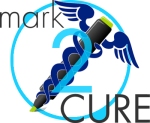In case you missed why Open Access is awesome, the lack of open access is only one of many barriers that discourage the dissemination of scientific information to the public. Fortunately, more researchers are publishing in Open Access journals or with Open Access options thanks to requirements by various funding agencies. Although open access issues still remain a significant barrier to the dissemination of scientific information to the public; a greater barrier may be the lack of confidence for reading and understanding scientific articles. Reading scientific literature can be intimidating for many people. It’s full of scientific jargon, unfamiliar tools and techniques, and can feel more or less like reading text in a foreign language. While many people would be content with reading press releases of scientific discoveries by science communicators and journalists, only a small percentage of scientific literature actually receives significant press coverage. Hence, people miss out on discoveries relevant to them every day!
For care providers/patients dealing with rare diseases, wading into the murky waters of scientific literature is often mandatory. Rare disease don’t receive nearly the same amount of research or media attention as more common diseases, leaving little choice but primary scientific articles to keep informed of important discoveries.
In Kim Goodsell’s case, she
quickly ran headfirst into a wall of unfamiliar concepts and impenetrable jargon. “It was like reading Chinese,” she says. But she persisted. She scratched around in Google until she found uploaded PDFs of the articles she wanted. She would read an abstract and Google every word she didn’t understand. When those searches snowballed into even more jargon, she’d Google that too. The expanding tree of gibberish seemed infinite—apoptosis, phenotypic, desmosome—until, one day, it wasn’t. “You get a feeling for what’s being said,” Kim says. “Pretty soon you start to learn the language.”Read more of her incredible story on how she deciphered her own genetic mutation.
Reading scientific literature is not as impossible as it seems. Most people can learn to read scientific papers with enough practice and patience (note- some papers take much more practice and patience than others). Furthermore, people can be much better than computer programs at identifying important information embedded in scientific documents. This is one reason why Mark2Cure seeks to engage citizen scientists in order to help annotate scientific literature.
In addition to making scientific literature more useful for everyone, Mark2Cure seeks to make scientific literature less intimidating to the average person by building their confidence and empowering them to help scientists make progress. By employing relevant gamification strategies, Mark2Cure will train non-scientists to extract important information from scientific abstracts and reduce the intimidation factor that discourages the average person from engaging with scientific literature.
Don’t be intimidated. With Mark2Cure, you can improve at reading scientific literature.
